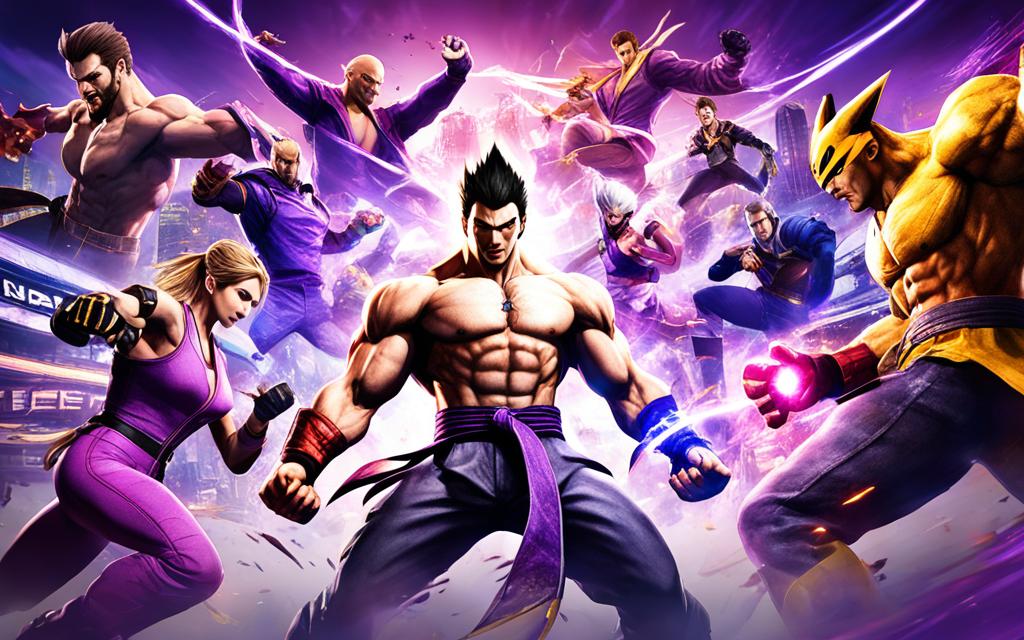Table of Contents
Introduction
Since its inception in 1994, Tekken has carved out a prominent place in the pantheon of fighting games. Developed and published by Bandai Namco Entertainment, this iconic series has not only set benchmarks in the genre but also amassed a dedicated global fanbase. With its rich history, diverse roster, and innovative gameplay, Tekken stands as a testament to the enduring appeal of competitive fighting games. This article explores the evolution of Tekken, highlighting its milestones, impact on the gaming industry fln ewsdaily.com, and what makes it a perennial favorite.
The Birth of Tekken
The original Tekken debuted in arcades in 1994, introducing players to a new kind of fighting game experience. Unlike its contemporaries, which often relied on simple 2D mechanics, Tekken featured a fully 3D fighting environment. This innovation allowed for greater freedom of movement and a more immersive combat experience. The game’s roster was relatively small but memorable, including characters like Kazuya Mishima, Heihachi Mishima, and Nina Williams.
Tekken’s success in arcades quickly translated to home consoles, leading to ports for the PlayStation and other systems. This transition was crucial in establishing Tekken as a mainstay in the fighting game genre.
Advancements and Innovations
Tekken 2, released in 1995, built upon the foundation laid by its predecessor, adding new characters, stages, and refined mechanics. It introduced the concept of a “Tekken Force” mode, a cooperative, beat ’em up gameplay style that would become a recurring feature in future installments.
The third entry, Tekken 3 (1997), was a landmark release. It was praised for its graphical improvements, diverse roster, and smooth gameplay. Tekken 3’s success solidified the series’ reputation and established it as a heavyweight in the fighting game arena. The game’s introduction of the “Bound” system allowed players to extend their combos, adding a new layer of depth to the fighting mechanics.
Tekken and Competitive Gaming
With the release of Tekken 4 in 2001 and Tekken 5 in 2005, the series continued to evolve, both technically and competitively. Tekken 4 introduced a more interactive environment, with stages featuring obstacles and unique terrain. Tekken 5, however, was notable for its return to a more traditional fighting style while incorporating new characters and features.
By the time Tekken 6 (2009) and Tekken Tag Tournament 2 (2011) came around, the series had firmly established itself in the competitive gaming scene. Tekken 6 brought a revamped combat system and introduced the “Rage” mechanic, which allowed players to unleash powerful attacks when their health was low. Tekken Tag Tournament 2 expanded on the tag-team mechanics and became a favorite in both casual and competitive play.
Tekken 7: A Modern Classic
Tekken 7, released in 2015, marked a significant chapter in the series. It featured an upgraded graphics engine, bringing the characters and environments to life with stunning realism. The game introduced the “Rage Arts” and “Rage Drives” mechanics, which provided players with powerful comeback tools. Tekken 7 also delved deeper into the Mishima family saga, offering a climactic resolution to one of gaming’s most storied rivalries.
The game’s robust online mode and extensive roster, which included guest characters from other franchises, contributed to its success. Tekken 7’s continual updates and balance changes have kept it relevant in the competitive scene, maintaining its status as a go-to game for fighting game enthusiasts.
The Future of Tekken
As of 2024, Tekken’s legacy continues to influence the fighting game genre. With the release of Tekken 8 on the horizon, fans eagerly anticipate the next evolution of the series. The upcoming installment promises to build on the strengths of its predecessors while introducing new mechanics and characters to keep the gameplay fresh.
Conclusion
Tekken’s journey from its arcade origins to its current status as a leading fighting game series is a story of innovation, competition, and enduring appeal. Its impact on the genre is undeniable, with each installment pushing the boundaries of what is possible in a fighting game. As Tekken continues to evolve, it remains a beloved series that represents the pinnacle of competitive fighting games, captivating both new players and seasoned veterans alike.
